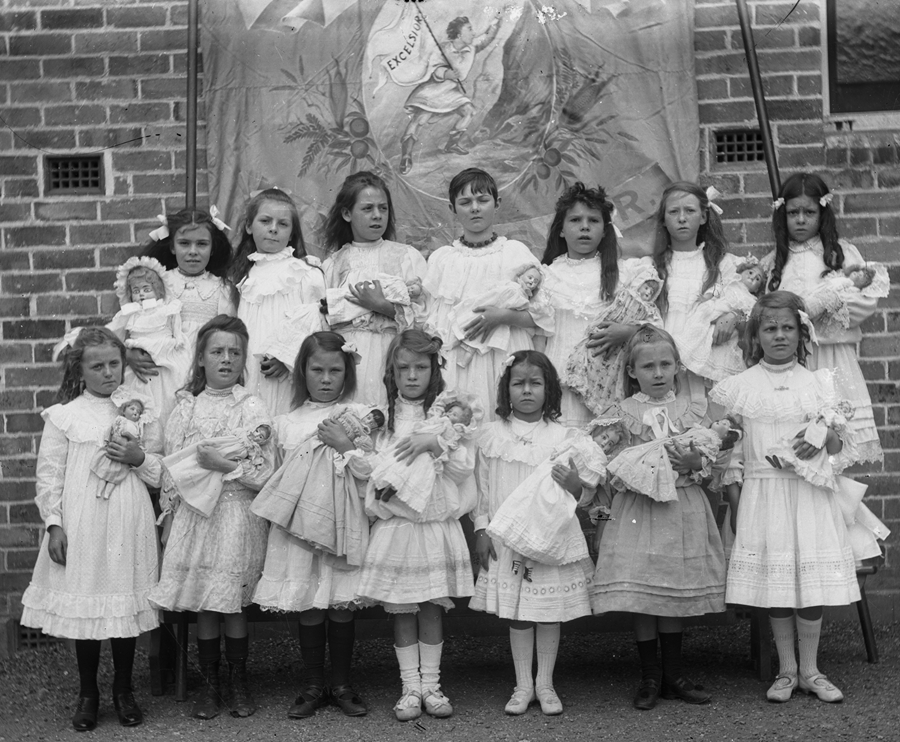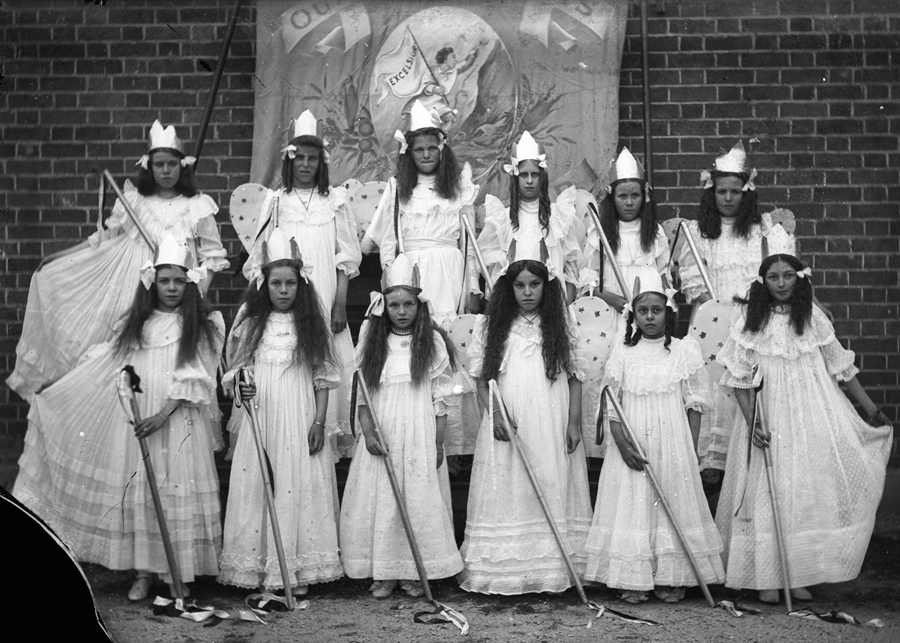Excelsior!
I might have known Longfellow had something to do with it.
Henry Wadsworth Longfellow.
I think of him as a kind of American Tennyson: the pair of them are corny balladeers whom I can’t help liking, at least a little bit, just on the strength of their word music. Epic poets of the Victorian era, pumping out metred rhyming stanzas packed with sentiment and imagery that was just right for its time.
Mind you, I rate Tennyson a few leagues ahead of Longfellow just on the strength of In Memoriam, where I can dip and find gems of real worth to contemplate. But Tennyson took a big turn down in my estimation when I read a very unflattering description of him in Frank Harris’s unreliable memoir, My Life and Loves – usually read for its juvenile erotic braggadocio but nevertheless peppered with worthwhile snippets about people and places the horny little egotist encountered in his eventful life. Harris says Tennyson “wasn’t even a thinker, but a sentimentalist”. He described hearing Tennyson speak to a group of admirers and commented that “the whole talk appeared to me simply brainless, but he was remarkably handsome, and at the request of his hostess he chanted several stanzas of Maude in a fine deep voice that brought out all the music of the verse”. “His semi-religious sentimentality and his narrow jingoism were the sources of his astounding popularity in England,” Harris wrote. I think these comments speak to the genre, of which Longfellow was certainly part.
I was probably not much older than ten, I suppose, when I first found Longfellow at the public library, in a slim illustrated edition of The Skeleton in Armour – a long rhyming yarn in which a long-dead viking tells a romantic tale of his roving life. I learnt it off by heart, but have since forgotten all but the opening lines and the general feeling of excitement and melancholic nostalgia it brought me.
Later I bumped into Longfellow’s famous Paul Revere’s Ride – another wonderful piece of word music, but not really up my alley – and The Village Blacksmith. I tried to read his Hiawatha, but simply couldn’t get on board and so I left Longfellow behind, only bringing him to mind occasionally. For example when I heard that odd Neil Diamond song, Longfellow Serenade, on the radio in the 1970s.
In the same way that revisiting films that one admired long ago often leads to disappointment, I inevitably found The Skeleton in Armour not so wonderful as I’d remembered when I more recently revisited it on line. That doesn’t matter. The enchantment was real at the time, and the appreciation for it gave me for word music has been lasting. But Longfellow’s work hasn’t aged well, to my mind at least, and this opinion was reinforced by my recent research into two old glass plate negatives I have just acquired.


Both photographs show groups of girls, perhaps pupils at a school or members of some church or social group. In one photo the girls are all holding dolls and many of them have facial expressions that range from dour to surly. In the other the girls seem a little older but not much happier, with no dolls but, instead dressed as angels or fairies in white and holding sticks with ribbons tied to the ends. I guess the apparatus is related to some form of dance.
The common thread in the photos is a cloth banner against the brick wall behind the groups. The banner – annoyingly cut off and obscured at top and bottom – has a picture of a chubby youth in what appears to be a nightdress and shiny boots gesticulating at a cliff face while carrying a flag with the word “EXCELSIOR”.
Although sadly I have no idea where these photographs were taken (they come from a collection mostly taken in the Maitland area of NSW and linked, I think, to a Catholic family) it didn’t take much searching to discover that the youth on the banner was a reference to a poem by Henry Wadsworth Longfellow.
Longfellow’s 1841 poem, Excelsior, is mercifully short. It tells the story of a youth striding off on some unknown mission into the mountains. He is carrying a flag – “a banner with a strange device, Excelsior”. Everybody warns him the weather is bad and getting worse and they all urge him to rest. He refuses and just keeps repeating the word “excelsior”, which apparently Longfellow had seen on the motto of New York and which is supposed to mean “higher” or “further” or something along those lines. So the youth, his eyes fixed on some undefined but higher goal, charges up the mountain against all advice and his body is found frozen there next day.
This kind of story was made to measure for the Victorian era. It reminds me of that other great chestnut, Casabianca, by Felicia Dorothea Hemans. You know the one: “The boy stood on the burning deck . . .” It’s about a boy on a ship during a naval battle. He doesn’t know it but his father, the captain, is dead and the ship is going to blow up. He would like to save himself (I suppose) but he is such a dutiful lad that he won’t leave without Dad’s permission. So he gets blown up and dies too.
This motif of self-sacrifice in pursuit of a higher goal or simply on the basis of obedience brought sentimental tears to the eyes of the Victorian patriarchy. Wanting young people to go blindly to their deaths on the basis of obscure abstractions is a common theme in history, and the desire persists today – in both original and modified form – wherever empires and ideologues are found.
Excelsior was an extraordinarily popular piece of verse, bringing the title word into play as a commercial brand-name and logo for various schools and clubs across the world. The idea of forever striving to be “better”, no matter the personal cost, has a strange appeal despite being inherently contradictory.
Longfellow dealt with the contradiction – what’s the point of striving to the point of seemingly useless death? – by noting that the dead youth was “lifeless but beautiful” and that heaven signalled its approval of his sacrifice by echoing his word “excelsior” “from the sky, serene and far”.
I suspect that this sentimental concept of noble and unquestioning self-sacrifice fell into a measure of disrepute in much of the Western World following the slaughter of The Great War which, thankfully, Longfellow did not live to eulogize.
None of this digression brings me closer to identifying the origin of these photographs. Perhaps, some day, some reader will enlighten me.



